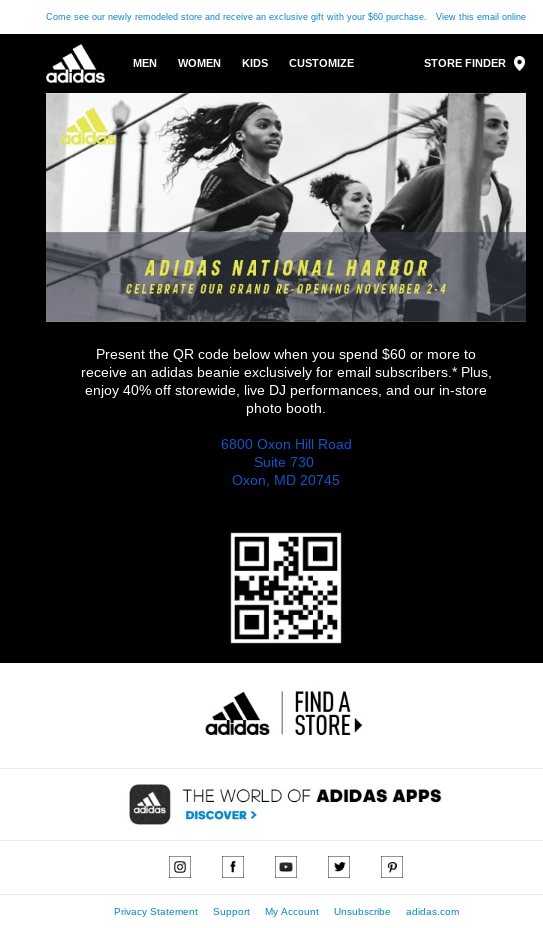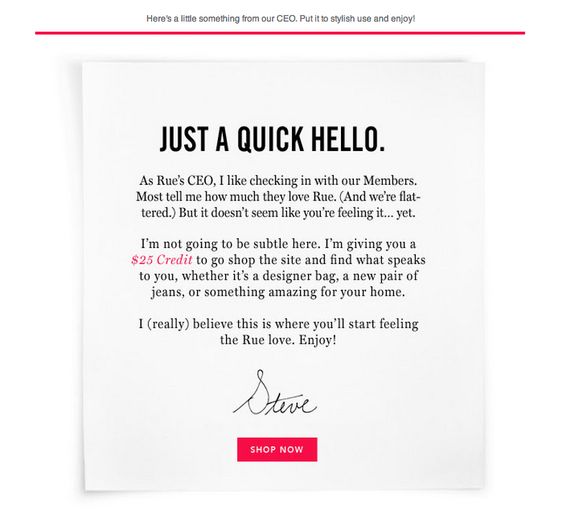Piggy-backing a lead nurturing strategy on your PPC campaign
You invest a lot of money and effort into your PPC campaigns. Once you’ve drawn leads onto your landing pages, you need a solid lead nurturing strategy to keep them engaged.
Email is an excellent medium for creating a lead nurturing campaign that truly resonates with prospective customers.
But developing a nurturing strategy isn’t all butterflies and rainbows. Leads that reach your website through PPC ads are different than others who find your brand through social media, word of mouth, or organic searches. These types of email campaigns require careful consideration and planning.
In this post, we’ll explain some of the benefits of choosing email for nurturing leads. We’ll also provide detailed suggestions for building your email series so you can keep leads engaged, hooked, interested, and ultimately convert them into customers.
Why should you use email for a lead nurturing campaign?
50% of the leads you generate across all mediums are not ready to commit to a relationship with your brand. And almost 80% will never convert into buyers.
Just like with dating, you wouldn’t jump into a long-term relationship with someone you just met and know nothing about, right? Well, your leads need to learn more about your company and services before they can feel confident buying from you.
Email gives you a chance to provide leads with the right content at the right stage of the buyer’s journey. You can develop a real conversation, learn things about each other, and forge a genuine relationship (hopefully without scaring them off).
But don’t take our word for it. Look at the numbers.
-
For every dollar spent, email marketing delivers $44 dollars in revenue on average.
-
Brands that leverage mediums like email marketing to create a solid lead nurturing strategy generate 50% more sales-ready leads for a fraction of the cost.
Email marketing works because, if done right, it’s a gentle way to provide vast amounts of information to your leads.
Email also makes it easy to integrate information about your leads from other platforms like Google Analytics and Google AdSense. This means you can provide your leads with hyper-personalized content that’s actually relevant to their needs.
How to maximize an email lead nurturing strategy with your PPC campaign
Before you start creating your lead nurturing campaign for potential prospects that found you through PPC, keep the following tips in mind. This will help you understand what makes PPC leads unique from leads who found you through other channels and how you can provide them with the best content at every stage.
1. Capture their emails.
This might seem like a no-brainer, but when a lead enters your landing page from a PPC ad, you need to consider how you’ll attain their email address.
Full-screen pop-ups are pretty trendy at the moment. When using these, write compelling copy that implies you’re ready to help solve a specific problem. Avoid condescending tones that could be construed as off-putting such as, “No thanks, I love my dull skin and acne.”
But what if your lead has conditioned herself to immediately click the exit button on these pop-ups? You’ll need another chance to grab her email. Incorporate widgets with email entry forms in strategic places throughout your landing page.
You can also entice readers to give their email with lead magnets such as eBooks, white papers, or other resources they might find valuable.
The bottom line: You must focus on getting their contact info if you’re going to plan on moving them down your sales journey.
2. Have a one-on-one conversation–or a few.
A few subtle changes in how you word and address your emails can have a huge impact on a lead’s perspective of your company.
Instead of addressing your emails from the name of your company, send out emails from specific people. You could send a welcome email from the CEO, another email from the head of customer service, and so on.
Word your body copy in a similar fashion. Even if you’re using an automated email service, you can still write your emails as though you’re speaking to one person.
This will help you forge a one-on-one connection with your leads: you’re talking with them instead of at them. It will also help show leads that your brand consists of real people and not robots grabbing for their cash.
This email from Rue contains a personal message from the CEO along with a $25 credit. How could anyone turn down that offer?
Image Source: Pinterest
3. Design custom personalized content.
Personalized emails are crucial for optimizing open-rates, click-through rates, and revenue. In fact, marketers notice a 20% increase in sales when they provide users with personalized content.
Not only that, but consumers enjoy and even expect personalized content from brands. Shockingly, 42% of people Adobe surveyed said they get angry or annoyed when brands don’t provide them with personalized content.
Integrating data from multiple sources is key here. Which keyword did your lead type into Google before clicking your PPC ad? Did they browse multiple blogs or products on your website? Did you ask them about content preferences when they signed up?
Use this information to design a lead nurturing campaign that’s personalized for every new subscriber.
This email from Adidas is personalized based on where the lead signed up. It invites her to attend a grand opening event.

4. Confront your competitors head-on.
In most cases, you want to avoid even mentioning your competitors’ names, right? When it comes to a lead nurturing strategy, it might be time to flip this view on its head.
Your leads have already done some of their own research. They know they have multiple brands to choose from and they’re trying to select the right one.
You don’t need to be harsh toward your competitors—that looks desperate and tacky—but you can explain what sets your company apart. Now’s the time to focus on your niche and why leads should choose you over everyone else out there.
5. Address every possible opposition.
Likewise, you also want to provide a rebuttal to any and every possible opposition your leads might form in their heads.
Don’t force them to dig through your website or pick up the phone to find answers. If they have an assumption that your company can’t fulfill their needs in a specific way, they’re going to keep that assumption unless you tell them otherwise.
It’s hard to accomplish this without reaching out to your current customers or leads for help. Simply ask why customers were apprehensive about following through with a sale. Ask leads what’s stopping them from making a purchase.
You may be surprised to find out that their assumptions are fairly baseless but you didn’t do the best job of communicating your brand’s services.
6. Take advantage of different multimedia.
Different people consume information in different ways. When building your lead nurturing strategy, give them a broad range of media to interact with your brand.
Use videos to introduce leads to your team or products. Create custom GIFs that explain complicated concepts. Use infographics to educate leads about your services. Record podcasts with thought-leadership topics.
Many people would rather watch a video about a product than read about it. Plus, 55% of people consume videos thoroughly—the same can’t be said about blog posts.
It’s important to offer different types of media in your lead nurturing campaign so your leads can get to know your brand on their own terms.
This email from Masterclass is specially designed to convert leads. It includes a slick video and it’s personalized based on the subscriber’s interest.

7. Highlight social proof.
No matter how much quality content you give your leads, there’s still an “us and them” dynamic at play. They may still think you just want their money and can’t be trusted to deliver the services or products your promise.
Use social proof to break this barrier. Send out surveys with open-ended questions to your customers with a request to use their responses in your marketing materials. Use these testimonials in your email campaigns.
You can also pull social proof from your online reviews on platforms like Facebook, Yelp, or Google.
When you choose photos for your emails, select photos of real people over objects or illustrations. People are more likely to take action when they’re presented with photos of human faces. In fact, using real photos of your team rather than stock photos can boost your conversion rates by 45%.
Wrap up
PPC leads are unique and require a specialized lead nurturing strategy to capture their interest and build trust in your brand. Use as much information as possible to understand your leads’ thought processes and needs inside and out. This will help you create the most relevant content possible for your lead nurturing campaign.
Let us know below if these tips help you use convert more leads into customers using email!
Do you need help designing a beautiful automated email series to pique interest and educate your leads? Check out some of our automation features to see how Emma can help.
MOST RECENT ARTICLES
Want to engage your audience and grow your brand? Try Emma's robust easy-to-use product today.














